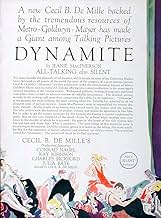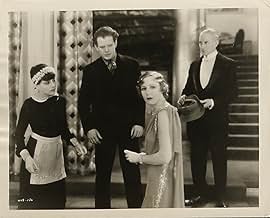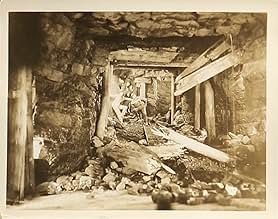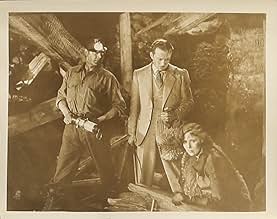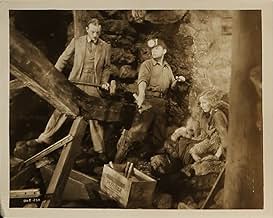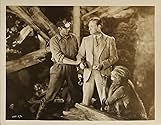Ajouter une intrigue dans votre langueWealthy Cynthia is in love with not-so-wealthy Roger, who is married to Marcia. The threesome is terribly modern about the situation, and Marcia will gladly divorce Roger if Cynthia agrees t... Tout lireWealthy Cynthia is in love with not-so-wealthy Roger, who is married to Marcia. The threesome is terribly modern about the situation, and Marcia will gladly divorce Roger if Cynthia agrees to a financial settlement. But Cynthia's wealth is in jeopardy because her trust fund will ... Tout lireWealthy Cynthia is in love with not-so-wealthy Roger, who is married to Marcia. The threesome is terribly modern about the situation, and Marcia will gladly divorce Roger if Cynthia agrees to a financial settlement. But Cynthia's wealth is in jeopardy because her trust fund will expire if she is not married by a certain date. To satisfy that condition, Cynthia arrange... Tout lire
- Réalisation
- Scénario
- Casting principal
- Nommé pour 1 Oscar
- 1 victoire et 1 nomination au total
- Bobby
- (as Douglas Frazer Scott)
- Good Mixer
- (non crédité)
- Mine Foreman
- (non crédité)
Avis à la une
Maybe because of his pompous and pretentious vats of nauseating drivel such as SIGN OF THE CROSS, I instinctively avoid the self-professed great man's movies. But his excellent FOUR FRIGHTENED PEOPLE and MADAM SATAN tempted me to give this ago. So glad I did - it's fantastic, honestly it's a million times better than I was expecting.
There's exceptions of course but I'd normally expect a 1929 talkie to be terrible. Early talkies are generally static and stagey with theatrical actors taking it in turns to enunciate their lines very, very slowly huddled around a hidden microphone. This displays absolutely none of those tell-tale traits. You'll not believe it's De Millie's first talkie! It's so dynamic and as far removed from a studio bound film as you can imagine. Clearly hours and hours of preparation went into this to get it just perfect. Like much more modern films, the camera doesn't simply point at whichever character is speaking. You get cut-always to bystanders showing and hearing their reactions. It's a proper film, not a filmed stage play.
These are people from the 1920s, real people from 1929 so don't expect them to be like us (which is part of the appeal of watching old pictures) but nevertheless the acting in this is natural with characters speaking normally and as in Mamoulian's APPLAUSE, sound is employed virtually another character. An example of that is the portentous beating of the hammer making 'Derk's' scaffold as he's waiting on death row which ominously returns in the dramatic climax.
This is not typical 1929 acting. You're drawn into believing that you're not watching actors but somehow glimpsing into the lives of real people. I've never really rated Charles Bickford before but under a skilful director he's a revelation. A pretty odd sort of guy but one who captivates your attention.
Being as I am, Mr Shallow, my inclination is to watch films with sexy ladies like Joan Blondell or Alice White so I wouldn't normally go out of my way to watch Kay Johnson but like with Charles Bickford she's thoroughly outstanding here. She's a sort of less sexy version of Norma Shearer but in my opinion a more modern and naturalistic actress - dare I say a better actress? I've already enjoyed her performance in MADAM SATAN but now that I've unexpectedly become a fan, I'm going to search out the rest of her work.
A great director, excellent acting and exceptionally high MGM production values make the maddest, silliest story into something quite amazing. Sorry Cecil for doubting you for all these years!
Being made in 1929 we even get the extended roaring of Leo the lion at the start.
I got lucky because they broadcast this on TCM the same week the classic movie channel premiered their recent biography 'Cecil B. DeMille: American Epic (2004)', another TCM film worth watching. It is devoid of the usual colossal cast and the behemoth type epic drama associated with most DeMille movies but am I ever glad I stayed up late for this one...the sets and costuming were pure eye candy! And while it is more simplistic than movies we think of as DeMille classics there are some remarkable scenes in this film including a glass walled bathtub with bath salts as big as the coal chunks mined out of the heroines'temporary' husband's work place. I'll not quickly forget the women's 'aero wheels' event during the sporting day at the country club. Could this have even been the inspiration to the wacky Busby Berkeley extravaganzas that didn't appear for at least another four years after 'Dynamite'? The costumes in this movie are museum worthy. There's also tremendous amount of Deco decor which is discriminating and sublime as a period piece.
The plot premise is rather sappy...spoiled rich kid falls for poor coal miner who teaches her a lesson in reality...where haven't we all heard that story before... but it's easy to forgive some minor flaws with this picture because visually it's too damn delicious to forget. The acting was decent and at times even humorous, especially amongst the love triangle. This relationship was obliging liberated given the era. And oh...the parties!
I also appreciate the lushness of a truly dynamic black and white movie from someone who understood how color translates when it desaturates. If I saw this movie when it premiered I would have marked it an 8 1/2 on a scale of 10.
The in-between-the-lines context of this movie is also remarkable. Recall that Prohibition of alcoholic beverages had been in effect as a federal mandate for nearly ten years, and that many States had been "dry" with Prohibition for longer than that. But "the glittering society" depicted in this movie was positively soaking in booze. Clearly this movie was written and filmed well before the banking crisis of 1928-29 turned into the bank failures and bank runs of the early 1930s. The pace of the language, the styles, the ways of talking and relating expressed in "Dynamite" show the viewer -- now seventy-five years later -- that the Roaring '20s were very frenetic, indeed.
Prohibition was something for the small towns and rural areas, or so it was said, then. It came into being because activist female leaders made their case that drunken behavior and alcoholism were twin punishments on women and on their children. The majority of bad and abusive drunks in that era, 1880 to 1920, were men, of course. The ones who suffered from their abusive behaviors were their women and their children, or others in their families.
This is a movie which is all about women and men. The lead character, Buddy Derks, is about to be executed for a murder he didn't commit. In a drunken carouse, the young man who committed the murder assaults his drinking buddy with a knife, and this fellow in his turn shoots his friend, fatally wounding him. Before he dies, on the floor of the swank club where they're drinking, he confesses to the murder which Derks has been saddled with. Justice is swift, surprisingly so, and Derks is suddenly released from death row.
He goes then to confront the society 'dame' who paid him $10,000 to marry her, in a jail cell ceremony. The why and wherefore of this marriage of convenience are really extraordinary and that twist makes the movie worth seeing, alone. But suddenly the "dame" has a husband that she really does not want, and that's where the fun begins ....
Bickford is amazing in this movie. He clearly overacts, but it seems somehow so natural for him to do so. Everybody in this moving is either dancing or roaring, it seems, so now we know something about how the Roaring '20s roared !
This "Dynamite" is pure dynamite. TCM has done film buffs a great service by showing it all, and there's every reason to petition them to show it again and again, and not just in the middle of the blooming night !! This movie earned an * 8 * for my vote and I would have given it higher marks if the sound track was made more clear, all the way through. As it stands, it is a unique and appealing cinematic treat.
I recommend it most highly and without mental reservations.
Of interest especially is the fact that you can recognize the stage training of many of the actors brought to Hollywood with the advent of sound, and how wooden previously silent actors can be when given voice. Also interesting is the characters' flagrant flouting of Prohibition, which still had 4 years left - after all, this was "pre-Code" Hollywood when there wasn't a censor to be found!
Most significant is the sound. The scene which annoys modern viewers is the chaos in the jailhouse wedding scene. However, this is one of the first instances of layered sound: the hammering of the gallows over the prisoner's singing over the wedding vows was a first for a medium that had gone talkie only a year & a half earlier.
So watch it for the details, not the drama
Le saviez-vous
- AnecdotesCarole Lombard was replaced during filming, but can still be seen in the released print.
- Citations
Hagon Derk: Ahhhh... bull!
- Crédits fousFilm Title is shown as the word DYNAMITE written on a box of..... dynamite, after being set down by a worker.
- Versions alternativesMGM also released this as a silent movie.
- ConnexionsEdited into Histoire(s) du cinéma: Fatale beauté (1994)
- Bandes originalesHow Am I to Know
(1929) (uncredited)
Music by Jack King
Lyrics by Dorothy Parker
Played on guitar and sung by Russ Columbo in prison
Played on radio and hummed and sung by Kay Johnson
Played on piano as background music and played at the end
Meilleurs choix
Détails
- Durée2 heures 9 minutes
- Couleur

